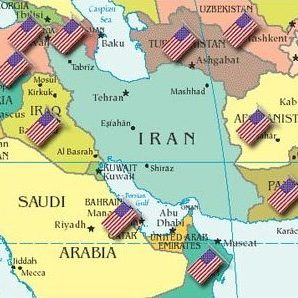A Maneuver for a Maneuver, Iran and U.S. flexing muscles in the Persian Gulf
Despite promising signals, Iran-U.S. face-off is still following an upsetting course

Despite promising signals, Iran-U.S. face-off is still following an upsetting course. Americans continue to threaten Iran with military strike and unite West against this country, and Iran continues stressing that U.S. lacks the power to attack Iran and it will use its full potential to stand against the threats form West.
The latest threat issued by Iran repeated frequently is blocking the Strait of Hormoz in case of any attack against the country.
Major General Seyyed Hassan Firouzabadi, Chief of Staff of Iran’s Armed Forces, has warned all countries that Iran would not allow other countries to use the strait, if they ignore Iran’s interest in this location.
Iranian senior officials have repeatedly said that they’ll block the strait if their interests are jeopardized.
Military Maneuvers in the 55-km Wide Strait
The Strait of Hormoz is one of the narrowest water passages of the world, 55 kms wide at its narrowest. With at least 40% of world’s needed energy imported through this passage, it is widely considered as the world’s most important energy route, controlled by Iran. Hencem any disturbance in this bottleneck is tantamount to a paralyzed global economy, skyrocketing oil prices and a freeze for many factories and industries that provide their energy from this part of the world.
This is the cause of United States’ prompt reaction since it has the utmost interests in Persian Gulf among transregional states. American officials stated that they won’t permit Iran to take over any measures for sealing the strait off.
According to AP, Commander of the U.S. Navy’s Fifth Fleet, Kevin Cosgriff, said that if Iran chocked off the Strait of Hormoz, it would be "saying to the world that 40 percent of oil is now held hostage by a single country", a serious threat for Western countries’ economy indeed.
Shortly after, news sources reported that the United States is going to launch a maneuver in Persian Gulf in which 2 British and one Bahraini military navy will also take part. The goal of the maneuver has been said to be stopping any possible blocking of Strait of Hormoz.
As Reuters reported Commodore Peter Hudson "the aim of Exercise Stake Net is to practice the tactics and procedures of protecting maritime infrastructure such as gas and oil installations."
On Tuesday this week Iran started its military maneuver named Payamber-e-A’zam (The Great Prophet) III on Persian Gulf coast. Air Force Missile Units and Revolutionary Guards’ vessels will carry out the exercise.
The goals of the maneuver were dubbed enhancing the capability of missile units and military vessels and the exercise is considered as Iran’s response to the upcoming United States’ maneuver in the Persian Gulf.
Meanwhile Egyptian news sources have reported that security services of Persian Gulf Arab states will start their practical measures related to their joint plan to weather any possible events such as a closure of the Strait of Hormoz.
According to these sources, the focus of this plan is activating the forces trained to quell military threats and increasing protection operations for military or economic facilities.
Increasing Threats and Worries
At any rate, any source of threat, even a minor military exercise, will worry the public opinion of the world. Definitely launching maneuver in a economically vital region like the Strait of Hormoz will make the story much more controversial.
The concern can be easily seen in well-known newspapers of the world. In its July 3rd issue Times wrote that "the price of oil soared over $145 today, fuelled by concerns of an attack on Iran by Israel or the US. Investors are worried that continuing tension could push Iran to close the Strait of Hormoz - a route so strategically important that oil prices could rise even higher if traffic is blocked."
Meanwhile, Gazprom Chairman, Alexey Miller, has warned that Crude oil prices could almost double to USD 250 a barrel within 18 months.
At the same time the world is increasingly in thirst for energy, adding to the importance of the Strait of Hormoz. According to United States’ EIA (Energy Information Administration) crude export from this strait will double by 2020 reaching 30-34 million barrels per day. In addition to crude oil, two million barrels of oil products and liquid natural gas are exported to the world through this waterway.
During the recent years, Arab countries of the Persian Gulf have sought for routes which can replace the Strait of Hormoz for oil export. However, it seems there are no reliable options which can fulfill the task and plans such as the 745-mile Petroline can only carry a part of the huge load of oil. So it seems that the strait will not lose its importance, at least in medium-term, and closing the waterway will have shocking aftermath for the global economy.

